The Meal Plan for Pregnant Women That Actually Works: Why Timing Beats Food Lists Every Time

Table of Contents
- The Simple Timing Trick That Changed Everything for Me
- The Nutrients That Don’t Play Nice Together
- What Your Grandmother Knew About Pregnancy Nutrition
- How to Actually Absorb the Food You’re Eating
- When Stress Steals Your Nutrients (And What to Do About It)
TL;DR
- Your body absorbs nutrients completely differently in each trimester – when you eat matters way more than how much
- Some nutrients are like frenemies – they block each other unless you separate them (looking at you, calcium and iron)
- Your grandmother’s weird pregnancy food rules actually have solid science behind them
- How you cook and prep food can triple how many nutrients you actually get from it
- Pregnancy stress literally steals specific nutrients from your body faster than you can replace them
The Simple Timing Trick That Changed Everything for Me
Can we talk about how frustrating it is to eat all the “right” foods and still feel exhausted? I was downing spinach smoothies and taking my prenatal vitamins religiously, but I felt like garbage. I was following every pregnancy meal plan I could find, but something was clearly missing.
Here’s what blew my mind during my pregnancy: your body doesn’t just need different nutrients at different times – it literally can’t absorb them properly unless you eat them at the right moments. I wish someone had told me this from day one instead of just handing me another list of “good pregnancy foods.”
The craziest part? In the first 6 months, you are unlikely to need extra food to give your baby everything they need – it’s all about working with your body’s natural changes instead of just eating more. This completely flipped my approach to eating during those first two trimesters.
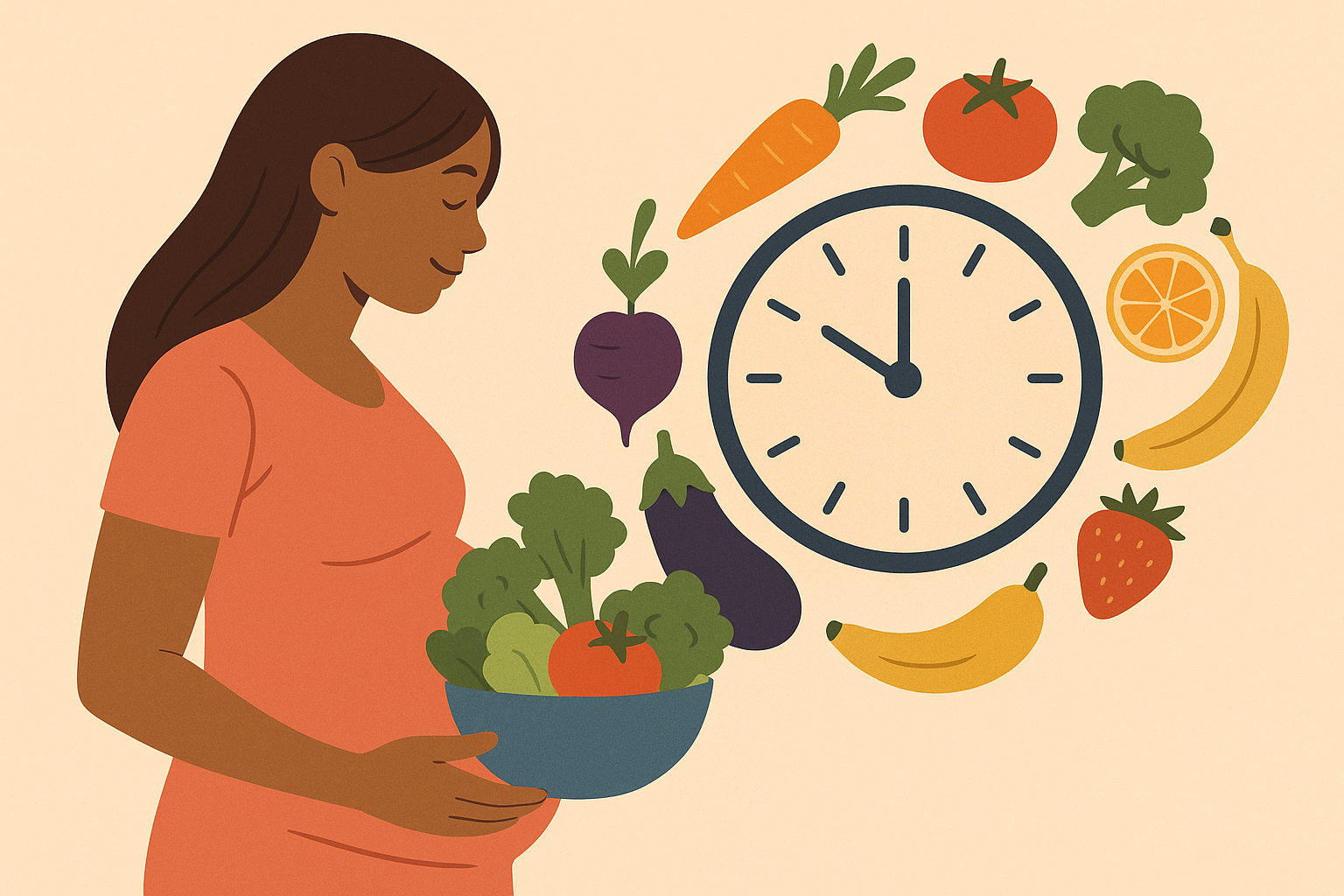
Your Body’s Secret Schedule
Think of your pregnant body like it’s running on different software every few months. Each trimester literally reorganizes how you process food, creating these windows where certain nutrients become superstars while others barely get absorbed at all.
I remember feeling like I was doing everything wrong when my first trimester eating strategies stopped working in my second trimester. Turns out, that’s totally normal – your body is supposed to change what it needs and when it needs it.
During the first trimester, your body is laser-focused on building your baby’s brain and nervous system. By the second trimester, you become this nutrient-absorbing machine while your baby’s bones start forming. The third trimester? Your body shifts into preparation mode, stockpiling everything your baby will need for those final growth spurts.
| Trimester | What’s Happening | Focus On | Best Time to Eat |
|---|---|---|---|
| First (1-12 weeks) | Building baby’s brain | Folate, B12, Choline | Morning (7-10 AM) |
| Second (13-27 weeks) | Your absorption peaks | Iron, Calcium, Protein | Midday (10 AM-2 PM) |
| Third (28-40 weeks) | Final growth push | Omega-3s, Vitamin K | Evening (5-7 PM) |
First Trimester: The Brain-Building Phase
Those first 12 weeks are all about your baby’s nervous system, and your body prioritizes this above everything else. I learned the hard way that folate absorption peaks in the morning, and if you miss that window, even taking supplements later won’t have the same impact.
Here’s a stat that changed how I approached breakfast: if women consumed the equivalent of one extra egg a day, the percentage of women with adequate choline intakes would increase from 39% to 80%. One extra egg! That’s it!
My morning routine became super simple: two eggs scrambled in butter with spinach and avocado at 7 AM. That’s all the choline, folate, and healthy fats my baby’s developing brain needed, eaten exactly when my body was primed to use them. No complicated meal planning required.
Second Trimester: The Sweet Spot
Weeks 13-27 were like pregnancy nutrition heaven. My morning sickness was gone, I could eat actual food again, and my body turned into this incredible nutrient-absorbing machine. I could eat larger portions without feeling sick, and everything I ate seemed to give me more energy.
The key was timing my biggest, most nutrient-dense meals between 10 AM and 2 PM when my digestion was strongest. I’m talking about real meals – not tiny snacks, but the kind of satisfying food that actually fueled me through the afternoon.
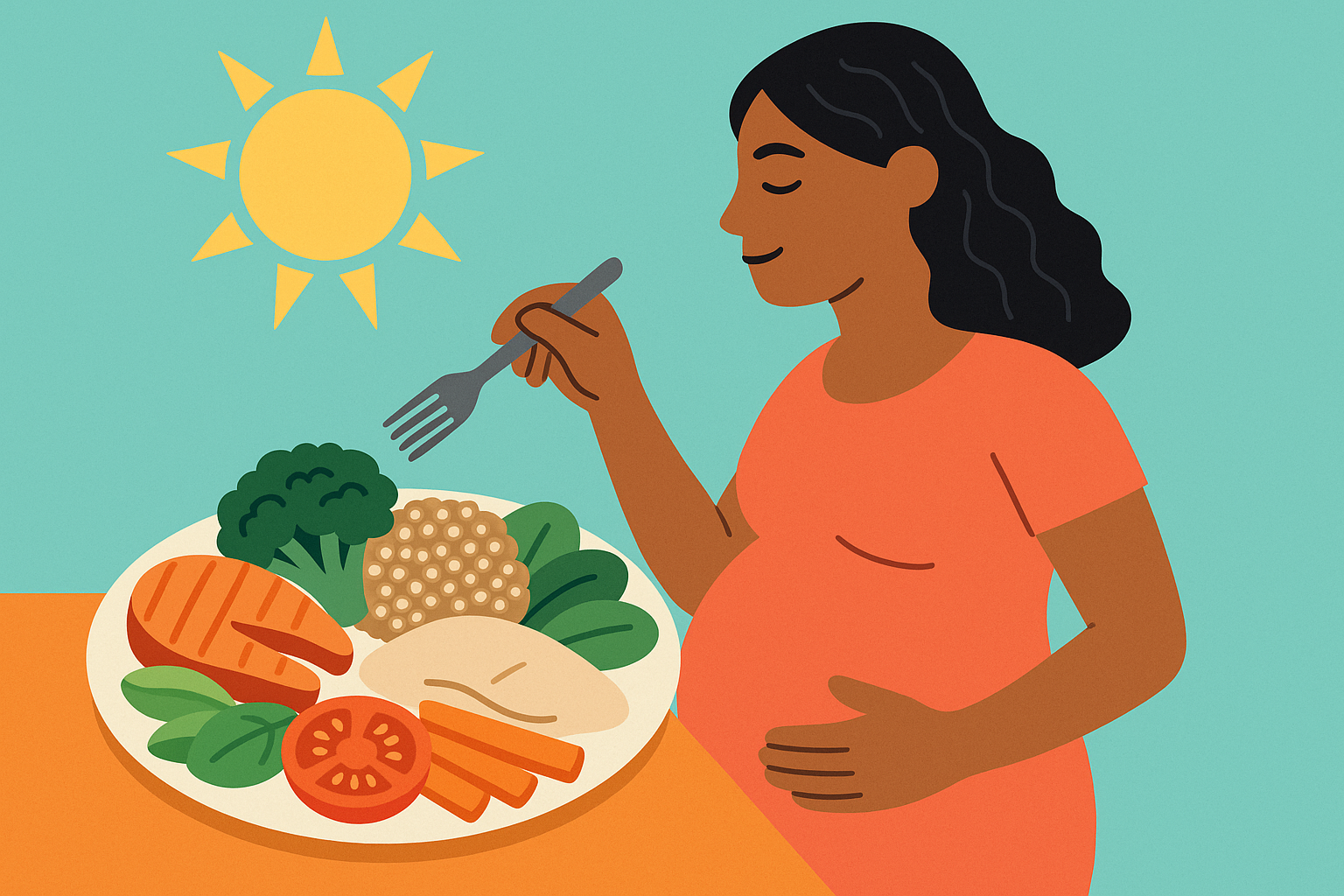
Working With Your Pregnancy Hormones
Pregnancy completely messes with your natural sleep and hunger rhythms, but most meal plans pretend like nothing has changed. I found that eating with these hormone shifts instead of fighting them improved my sleep, reduced my morning sickness, and gave me way more energy.
The Hormone-Friendly Eating Schedule
Your pregnancy hormones follow pretty predictable patterns throughout the day, and you can work with them instead of against them. I started eating my biggest protein meal when my cortisol naturally peaked in the morning, and having complex carbs 3-4 hours before bed to help my body make melatonin for better sleep.
Here’s what actually worked for me:
- Protein-rich breakfast within an hour of waking up
- My biggest meal between 10 AM and 2 PM
- Complex carbs 3-4 hours before bed
- No caffeine after 2 PM (this one was hard!)
- Magnesium-rich foods with dinner
- A 12-hour overnight fast when I could manage it
Finally Beating Morning Sickness
Everyone told me to “eat small frequent meals,” but that advice was missing the crucial piece: what order to eat things in. I discovered that starting each day with room temperature lemon water 20 minutes before any food, then having easily digestible proteins before adding carbs, practically eliminated my nausea.
This worked when nothing else did. I had tried crackers, ginger tea, and every remedy from well-meaning friends and family. But understanding the timing component made all the difference between feeling sick all day and actually being able to eat real food.
The Weeks That Matter Most
The foods you eat during specific pregnancy weeks can actually influence how your baby’s genes get expressed – basically programming their metabolism, immune system, and disease risk for life. Understanding these critical windows helped me prioritize the right nutrients when they’d have the biggest impact.
The Game-Changing Windows
Weeks 6-9, 16-20, and 28-32 are when your nutrition has the most profound impact on your baby’s long-term health. During weeks 6-9, I went all-in on choline-rich foods for brain development. Weeks 16-20 became my omega-3 and colorful vegetable phase for immune system programming.
The final push was weeks 28-32, when I focused on diverse fiber sources to set up healthy gut bacteria patterns for my baby. I increased my intake of prebiotic foods and fermented vegetables during this window, knowing that my baby’s gut health would be influenced by mine.
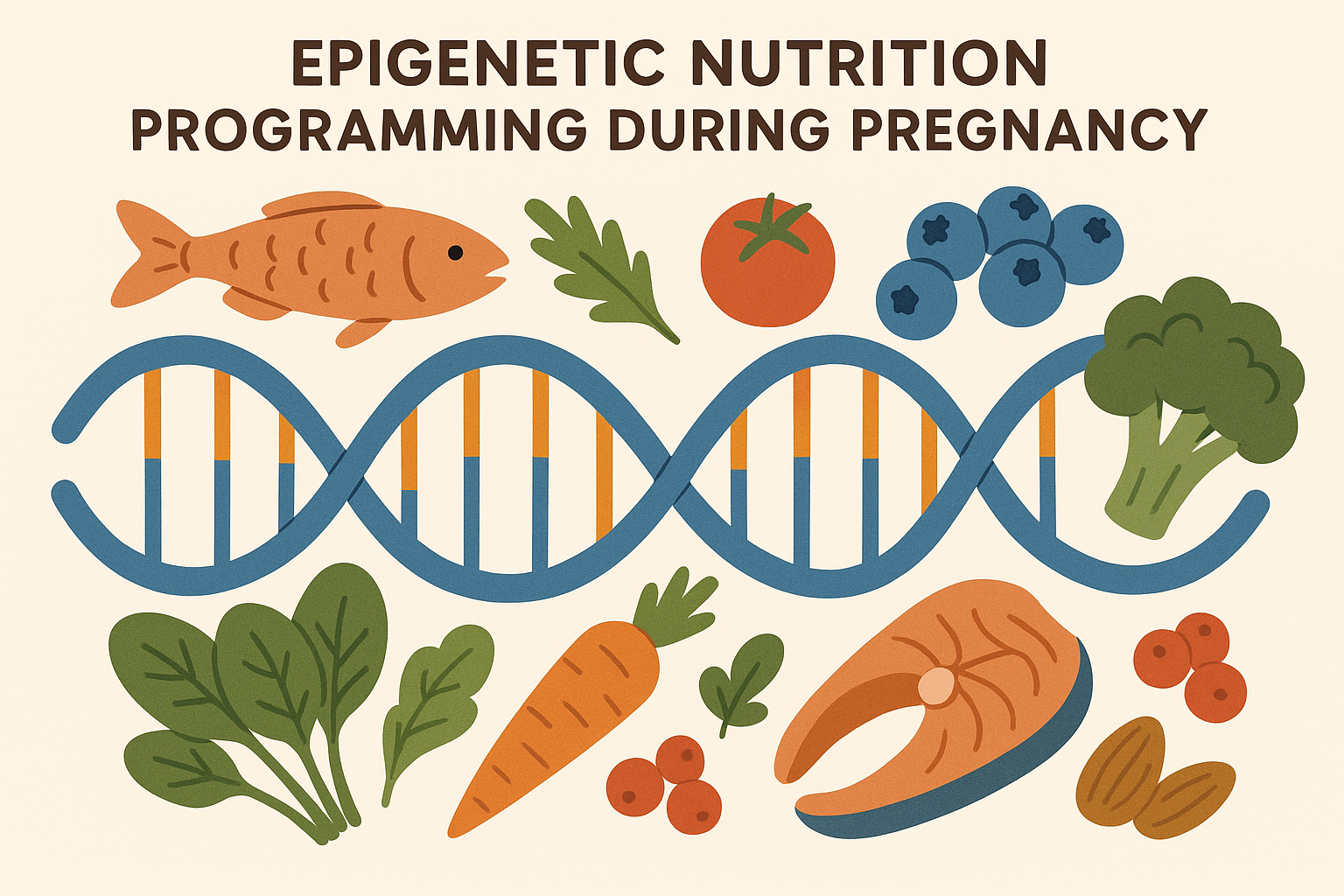
The Nutrients That Don’t Play Nice Together
Most pregnancy meal plans treat vitamins and minerals like they’re all best friends who love to hang out together. The reality? Some nutrients are like that friend who starts drama whenever they’re in the same room. Understanding these relationships was the key to actually getting the nutrients my body needed instead of just eating the right foods and hoping for the best.
I was so frustrated for months, eating everything the books told me to eat but still feeling depleted and exhausted. Once I learned about which nutrients help each other and which ones basically cancel each other out, my energy levels completely transformed.
The Nutrients That Fight Each Other
Learning which minerals compete for absorption and which ones boost each other’s effectiveness was like getting the cheat codes for pregnancy nutrition. I couldn’t believe some of the most common pregnancy advice was actually creating nutrient deficiencies by pairing the wrong things together.
| What You’re Combining | What Actually Happens | How Much It Matters | What to Do Instead |
|---|---|---|---|
| Iron + Vitamin C | They’re best friends | +300% iron absorption | Always eat together |
| Iron + Calcium | They fight for absorption | -60% iron absorption | Separate by 2+ hours |
| Zinc + Copper | They compete | Need 10:1 balance | Get both from food |
| Magnesium + Vitamin D | Perfect partners | +40% magnesium absorption | Take together |
The Iron-Calcium Drama
I couldn’t believe that the standard advice to take calcium and iron together actually reduces iron absorption by up to 60%. No wonder so many pregnant women develop anemia despite taking iron supplements! Separating these minerals by at least 2 hours and pairing iron with vitamin C sources instead increased my iron absorption by 300%.
Here’s what I started doing: I’d have my iron-rich foods (like spinach or ground beef) with bell peppers, strawberries, or citrus fruits. I saved my calcium-rich foods like yogurt and cheese for completely different meals. The difference in my energy levels was noticeable within weeks.
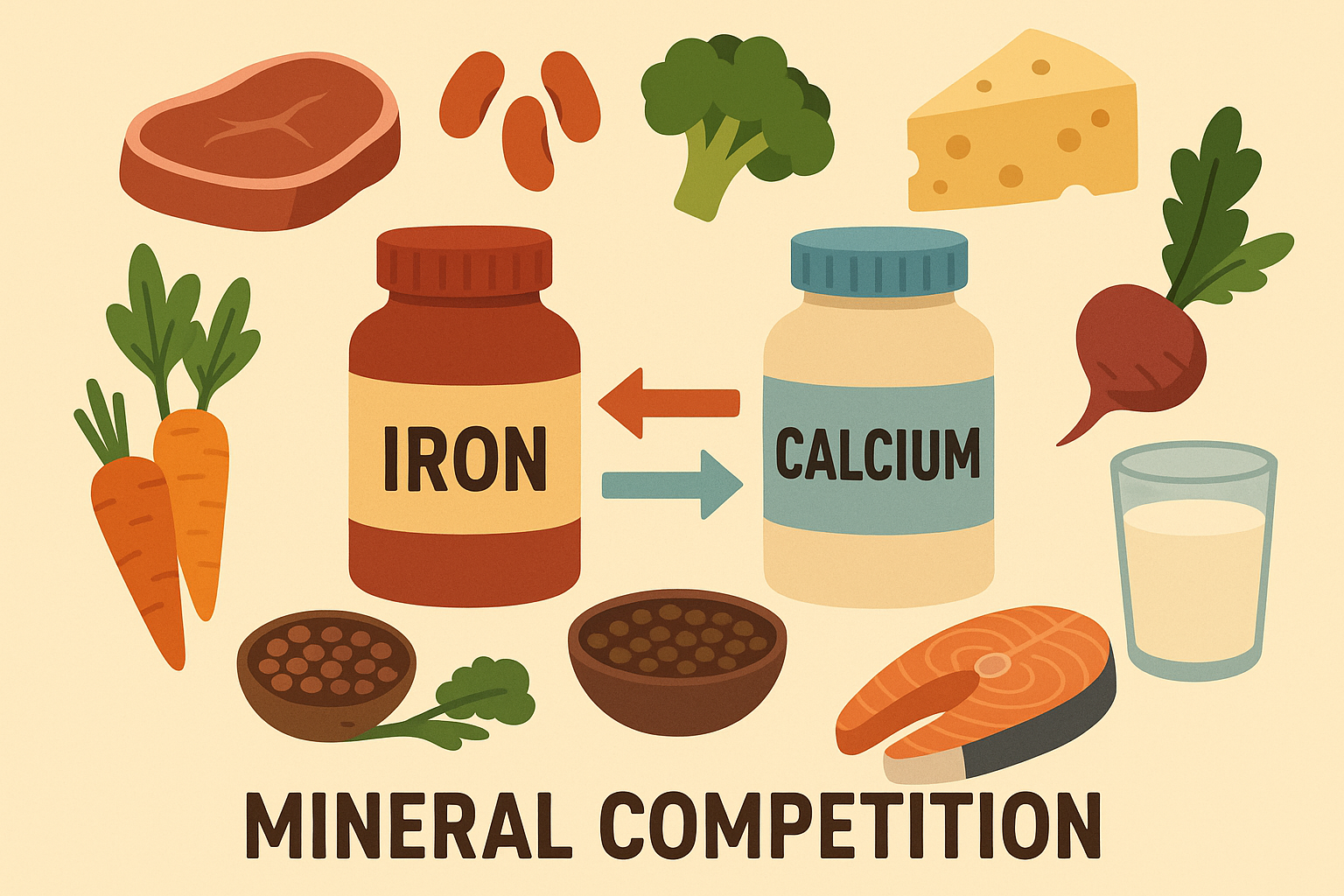
The Zinc-Copper Balancing Act
Pregnancy dramatically increases your zinc needs, but here’s what nobody tells you: too much zinc can create copper deficiency, leading to fatigue and a weakened immune system. I learned to maintain about a 10:1 zinc to copper ratio through food sources rather than supplements to avoid this hidden deficiency that many pregnant women experience without realizing it.
The Forgotten Minerals That Matter
These tiny nutrients rarely get mentioned in pregnancy discussions, yet they often make the difference between a healthy pregnancy and one filled with complications. I discovered that paying attention to these “forgotten” minerals was just as important as the big-name vitamins everyone talks about.
Selenium: The Mood Protector
Adequate selenium during pregnancy reduces the risk of postpartum depression by 50% and supports optimal thyroid function, yet it’s completely missing from most meal plans. I found that including just 2-3 Brazil nuts daily gave me all the selenium I needed, but I had to be careful not to go overboard since too much can be toxic.
Chromium: The Blood Sugar Stabilizer
Chromium deficiency during pregnancy increases gestational diabetes risk and can program your baby for future metabolic problems. I learned that chromium needs increase by 30-50% during pregnancy, so I made sure to include chromium-rich foods especially when I was eating carbs.
My simple daily routine looked like this:
- 2-3 Brazil nuts with breakfast for selenium
- Broccoli or nutritional yeast with carb-heavy meals for chromium
- A handful of pumpkin seeds for zinc
- A square of dark chocolate for magnesium (my favorite!)
- Seaweed snacks for iodine
- Grass-fed liver once a week for everything else
What Your Grandmother Knew About Pregnancy Nutrition
Traditional pregnancy nutrition practices from different cultures contain some seriously sophisticated nutritional science that modern meal planning completely overlooks. I found that these time-tested approaches to common pregnancy issues often worked better than contemporary advice because they’re based on thousands of years of trial and error.
This wisdom is becoming more relevant as countries recognize the importance of proper pregnancy nutrition. “Indonesia has launched a $45 billion nationwide free meal program aimed at providing nutritious meals to 82.9 million people by 2029” ABC News reports, with the program initially focusing on school children and pregnant women, showing how traditional approaches are informing modern nutrition policy.
The “Warming Foods” Concept That Actually Works
My Korean grandmother always made me eat warm soups when I was sick, and it turns out she was onto something. Traditional Chinese Medicine’s idea of “warming” versus “cooling” foods actually aligns with what we now know about how different foods affect circulation, digestion, and energy during pregnancy.

Supporting Your Digestive Fire
Pregnancy naturally weakens your digestion (hello, heartburn and constipation!), and I found that traditional warming spices could restore optimal digestion without the side effects of modern antacids. Starting meals with warm, cooked foods instead of cold, raw options and adding gentle warming spices made a huge difference in how well I could digest my food.
My go-to digestive fire breakfast became warm quinoa porridge with grated fresh ginger, a pinch of cardamom, and chopped walnuts. I cooked it with coconut milk and topped it with stewed apples instead of raw fruit. This warming combination eliminated my morning nausea and gave me energy that lasted until lunch, compared to the cold smoothies I used to drink that left me hungry within an hour.
Preparing Your Body for Birth and Recovery
Traditional cultures emphasized specific foods during pregnancy that prepared the body for easier labor and faster postpartum recovery. I started drinking red raspberry leaf tea in my second trimester for uterine tone, and focused on warming, building foods while avoiding too many raw, cold foods in my third trimester.
Indigenous Wisdom About Nutrient Density
Indigenous cultures worldwide prioritized organ meats, fermented foods, and seasonal eating during pregnancy – not because of cultural preferences, but because these practices maximize nutrient density and bioavailability. Modern science is finally catching up to what these cultures figured out centuries ago.
The importance of culturally-appropriate nutrition is highlighted in current policy discussions. As nutritionist Tan Shot Yen noted about the Indonesian meal program, “Staple food doesn’t have to be rice. Children in Papua don’t eat rice. It wouldn’t make any sense to have a rice field there” ABC News, emphasizing how traditional dietary patterns should inform modern nutrition programs.
Making Organ Meats Less Scary
I know, I know – liver sounds gross. But before you skip this part, hear me out. Organ meats provide the most bioavailable forms of nutrients crucial for pregnancy, yet they’re missing from most modern meal plans because we think they’re weird, not because they’re not nutritious.
I started by mixing tiny amounts of chicken liver pâté into ground beef for tacos. Couldn’t taste it, but my energy levels went through the roof. Sometimes the weird old-school foods actually work better than the Instagram-worthy pregnancy foods everyone raves about.
The Fermentation Magic
Traditional fermented foods provide specific bacterial strains that support your gut health and establish your baby’s microbiome foundation. I started slowly with small amounts of sauerkraut and kimchi to avoid digestive upset, and eventually worked up to making my own ferments so I could control the salt and additive content.
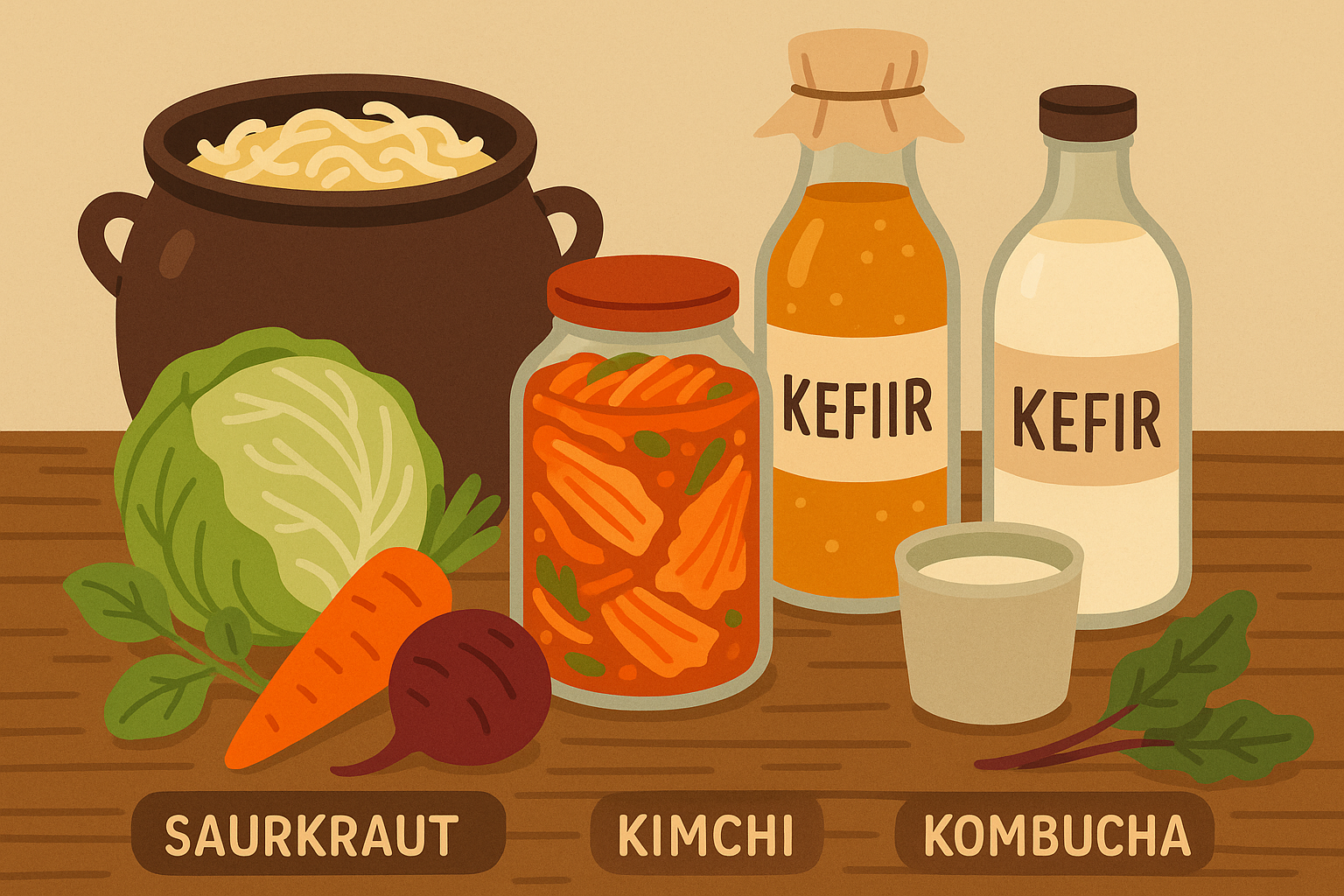
How to Actually Absorb the Food You’re Eating
The difference between eating nutrients and actually absorbing them becomes critical during pregnancy when your needs skyrocket. I discovered that how you prepare, combine, and eat foods can dramatically alter their nutritional impact – making the difference between meeting your pregnancy needs and developing deficiencies despite eating a “perfect” diet.
The Old-School Prep Methods That Actually Work
Those traditional preparation methods our grandmothers used weren’t just cultural habits – they were sophisticated techniques for getting the most nutrition out of food. Incorporating these methods into my modern meal planning dramatically improved how well my body could access the nutrients in my food.
The Soaking and Sprouting Game-Changer
Soaking grains and legumes can increase mineral availability by 200-400% while reducing the compounds that interfere with absorption. I learned to soak all grains, nuts, and legumes for 8-24 hours before cooking, adding a splash of apple cider vinegar to the soaking water to enhance mineral release even more.
Here’s my super simple weekly prep routine:
- Sunday: Soak grains and legumes for the week
- Monday: Start bone broth in slow cooker
- Tuesday: Begin fermenting vegetables
- Wednesday: Sprout seeds and nuts
- Thursday: Make liver pâté or cook organ meats
- Friday: Prepare homemade sauerkraut
- Saturday: Mix up warming spice blends
Every Sunday, I soaked 2 cups of quinoa, 1 cup of almonds, and 1 cup of black beans in separate bowls with a tablespoon of apple cider vinegar in each. By Wednesday, I had pre-soaked ingredients ready to cook that had 3x more available minerals than if I’d cooked them straight from the package. The quinoa became fluffy and digestible, the almonds were easier to blend into milk, and the beans cooked faster and caused zero digestive issues.
Cooking Methods That Actually Preserve Nutrients
Different cooking methods can either preserve or destroy nutrients, with some techniques actually increasing the bioavailability of compounds crucial for pregnancy. I discovered that steaming or lightly sautéing vegetables preserved water-soluble vitamins while making fat-soluble vitamins more available, and using cast iron cookware naturally increased the iron content of my foods.
The key was understanding which nutrients needed what treatment. Raw vegetables gave me certain enzymes, but lightly cooking tomatoes increased their lycopene content by 400%. I started varying my preparation methods based on what nutrients I was trying to maximize that day.
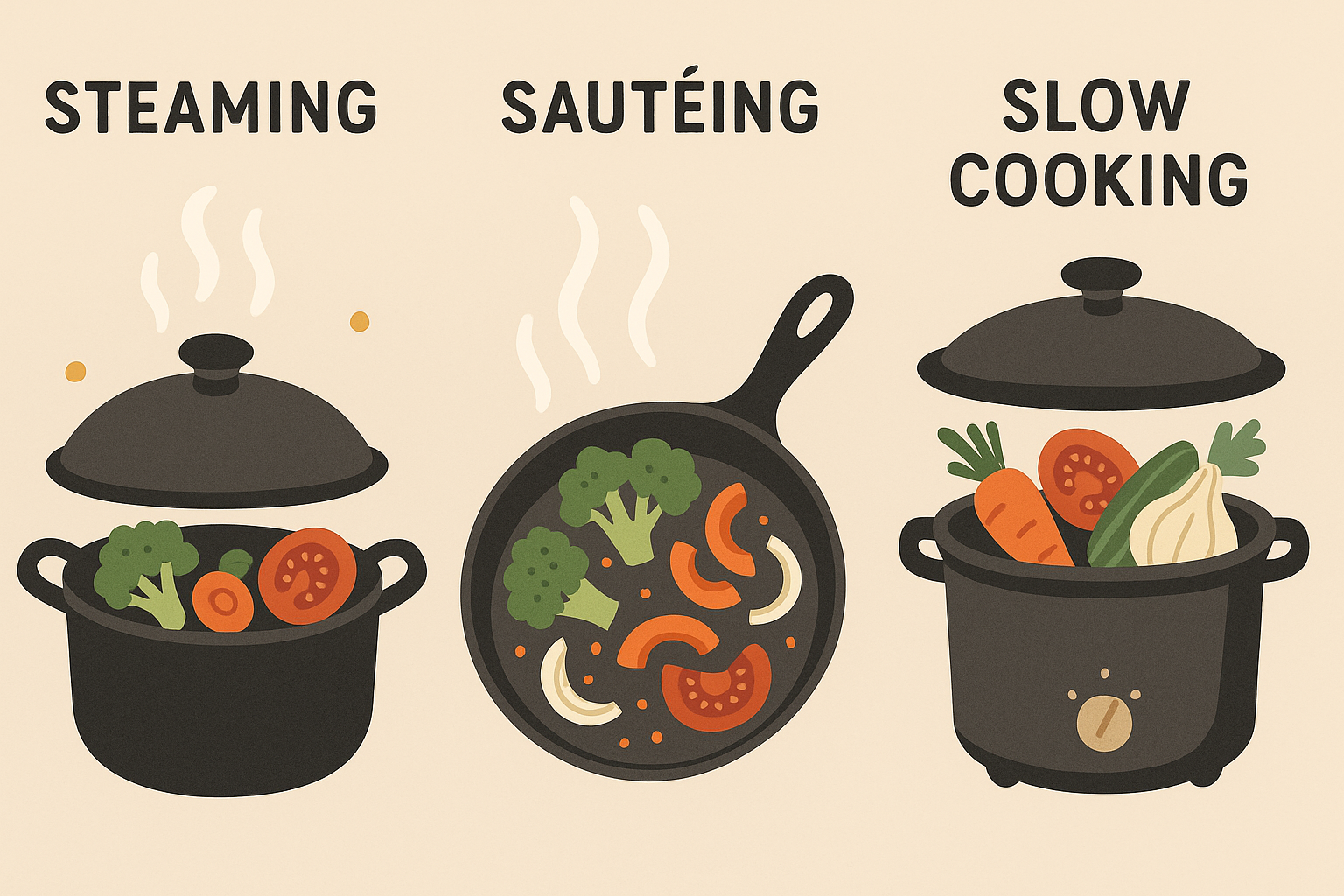
Making Supplements Actually Work
When whole foods aren’t enough, understanding how to properly time and combine supplements with food can maximize absorption and minimize waste. I learned that different nutrients have optimal absorption windows throughout the day, and timing supplements correctly can literally double their effectiveness.
This becomes especially important when you consider that “once you get to the third trimester, you should get about 200 more calories a day”, making nutrient density and absorption even more critical during this final growth phase.
The Simple Supplement Schedule
Take your prenatal with breakfast (the fat helps absorption). If it makes you nauseous, try taking it with dinner instead. That’s honestly most of what you need to know.
I created a simple schedule that actually worked: fat-soluble vitamins with breakfast (which always included avocado or nuts), B-vitamins mid-morning on an empty stomach, and minerals spread throughout the day with specific food pairings to enhance uptake.
When Stress Steals Your Nutrients (And What to Do About It)
Pregnancy stress directly messes with how well you absorb nutrients, creating this vicious cycle where nutritional deficiencies make you feel more stressed. I discovered that no meal plans address this reality, yet understanding and breaking this cycle became crucial for maintaining both my mental health and nutritional status throughout pregnancy.
How Stress Literally Steals Your Nutrients
Chronic stress during pregnancy depletes specific nutrients at crazy fast rates, requiring targeted nutritional interventions that go way beyond standard prenatal vitamins. I learned that stress hormones can deplete certain nutrients so rapidly that even perfect eating might not be enough without some strategic supplementation.
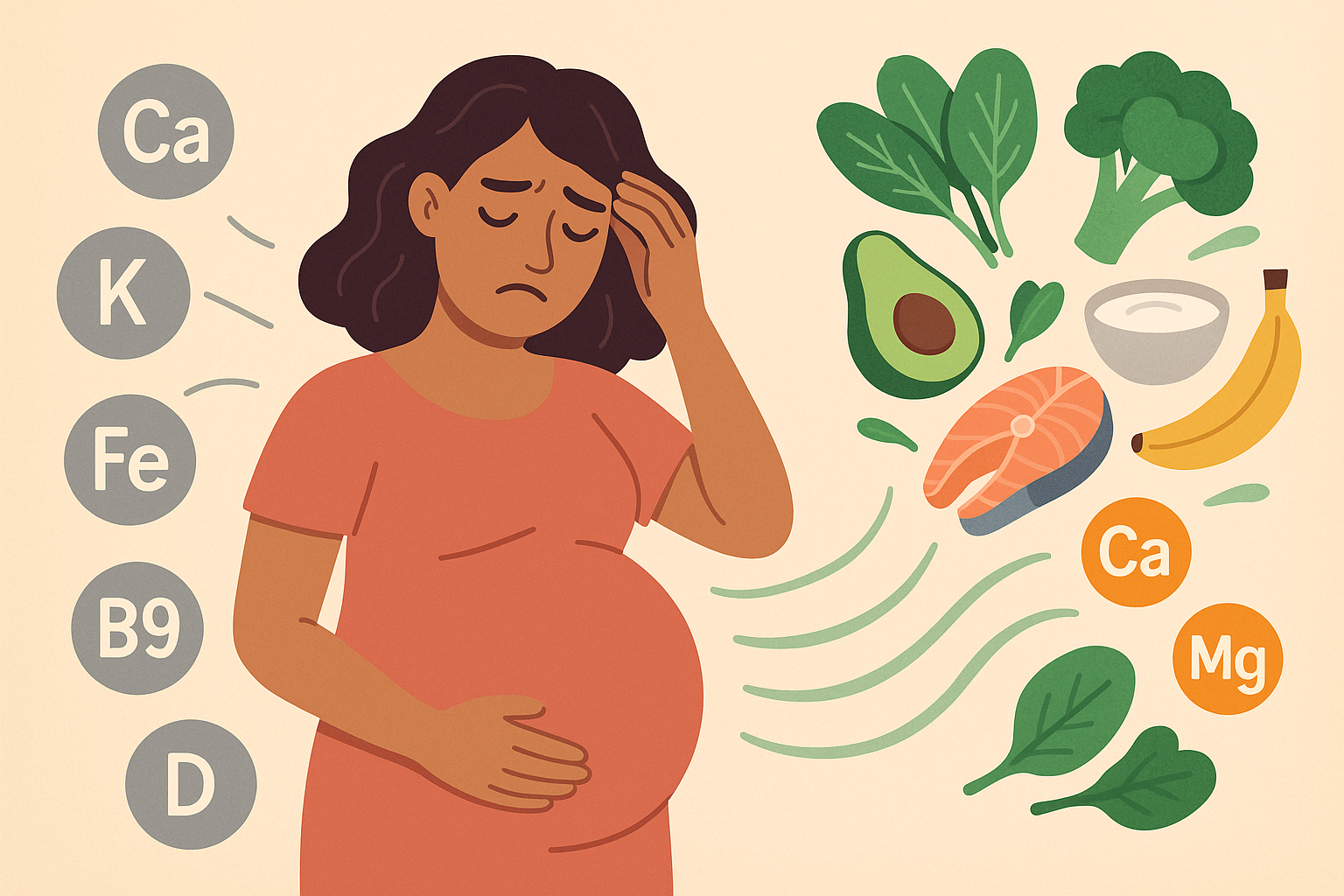
The Magnesium Disappearing Act
Stress hormones rapidly deplete magnesium stores, leading to muscle cramps, insomnia, and increased risk of preterm labor. I discovered that magnesium needs during a stressed pregnancy can be 300% higher than normal recommendations, making foods rich in this mineral essential during difficult periods.
The scope of this issue becomes clear when you consider that “low choline intake levels are associated with an increased risk of neural tube defects in women with adequate folate levels”, showing how stress-induced nutrient depletion can impact multiple systems at once.
When I was stressed about work in my second trimester, I started getting horrible leg cramps at night. Adding some pumpkin seeds to my yogurt and taking baths with Epsom salt fixed it within a week. Sometimes the simple solutions really do work.
B-Vitamin Burnout
B-vitamins get consumed rapidly during stress response, but standard B-complex supplements often contain synthetic forms that stressed pregnant bodies can’t efficiently use. I learned to focus on methylated B-vitamin forms and include liver, nutritional yeast, and leafy greens rather than relying solely on supplements.
My energy crashed completely during a particularly stressful period in my second trimester. Adding nutritional yeast to my meals and including chicken liver pâté twice weekly restored my energy levels within days – something my synthetic B-complex never accomplished.
Healing Your Gut When Stress Hits
Pregnancy stress, environmental toxins, and food sensitivities create intestinal permeability that blocks nutrient absorption even from perfect diets. I found that healing this gut barrier dysfunction required specific nutrients and timing that differs from non-pregnant protocols due to hormonal influences on gut lining integrity.
Repairing Your Gut Barrier
Bone broth became my daily ritual. I sipped it warm throughout the day, especially when I felt stressed or noticed digestive issues. The amino acids helped repair my gut lining while providing minerals in their most absorbable form. You can literally throw some chicken bones in a slow cooker with water and let it go overnight, or buy the expensive stuff from the store – both work for getting those gut-healing nutrients.
Anti-Inflammatory Food Combinations
The order and combination of anti-inflammatory foods can either amplify or cancel their effects. I discovered that starting meals with bitter greens stimulated digestive enzymes and reduced inflammatory response to foods, while combining turmeric with black pepper and healthy fats increased curcumin absorption by 2000%.
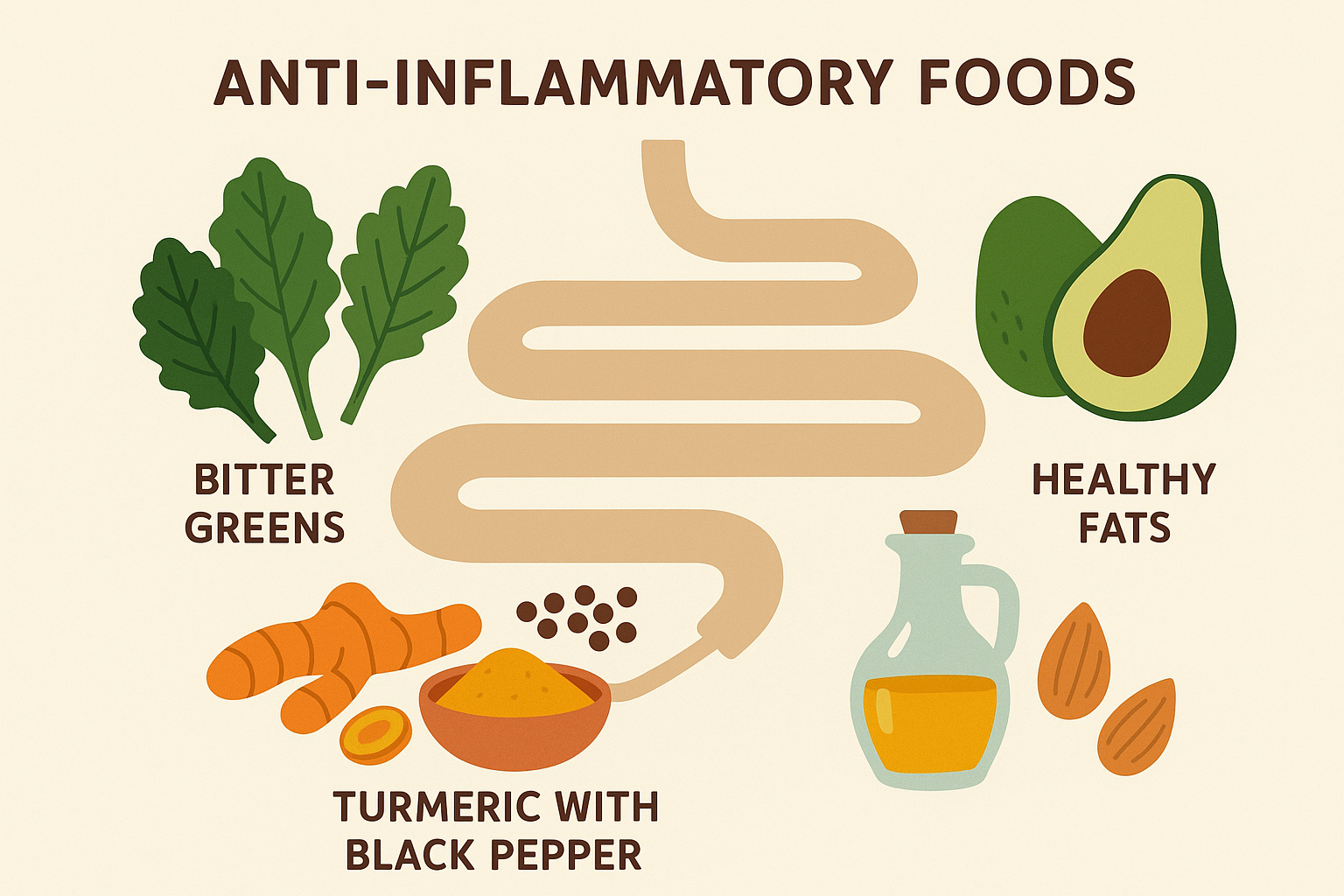
Supporting Your Stress Response System
Pregnancy places enormous demands on your adrenal glands, and supporting adrenal function through specific nutritional strategies prevented the fatigue and mood swings that derailed my healthy eating patterns. I learned to include pregnancy-safe adaptogens and maintain blood sugar stability to support my body’s stress management systems.
Pregnancy-Safe Stress Busters
Holy basil tea became my evening ritual, replacing my usual chamomile. The gentle adaptogenic properties helped me wind down without the drowsiness that other herbal teas caused. Not all adaptogens are safe during pregnancy, so I stuck to the gentle, food-based ones.
Blood Sugar Stability for Better Stress Management
Blood sugar swings amplify stress hormones during pregnancy, creating a cascade that depletes nutrients and increases complications. I learned to eat protein within 30 minutes of waking, include healthy fats with every meal, and even tested my blood glucose occasionally to identify personal trigger foods that caused problematic spikes.
Here’s my stress-busting meal template that actually worked:
- Morning: Protein + healthy fat within 30 minutes of waking
- Mid-morning: Magnesium-rich snack if needed
- Lunch: My biggest meal with complete proteins and complex carbs
- Afternoon: B-vitamin rich foods or adaptogenic tea
- Dinner: Anti-inflammatory foods with digestive spices
- Evening: Calming foods 3 hours before bed

For those looking to support their pregnancy nutrition with high-quality, bioavailable supplements, Organic Authority’s marine collagen provides crucial amino acids for fetal development while supporting maternal tissue repair. Their commitment to superior absorption and efficacy aligns perfectly with this comprehensive approach to pregnancy nutrition.
What I Wish Someone Had Told Me From Day One
Creating a meal plan that actually works during pregnancy goes way beyond listing healthy foods – it’s about understanding the timing, preparation, and combination strategies that get nutrients into your body and your baby’s developing systems. I’ve learned that the difference between feeling exhausted and energized during pregnancy often comes down to these overlooked details that can transform how well your body uses what you’re eating.
Before you start feeling bad about all the things you’ve been doing “wrong” – stop. I ate ice cream for breakfast during my first trimester and my baby turned out perfectly healthy. This isn’t about being perfect; it’s about making small improvements where you can.
The journey through pregnancy nutrition doesn’t have to be overwhelming when you understand these foundational principles. Start with one thing that resonates with your current situation – maybe it’s having your prenatal vitamin with breakfast instead of dinner, or adding some bell pepper to your iron-rich meals. Small changes add up, and you’re already doing better than you think.
Don’t stress if you can’t eat at the “optimal” times. If you work nights or have a toddler who doesn’t care about your meal schedule, just try to space things out when you can. Something is always better than nothing.
All this talk about grass-fed this and organic that – I get it, it’s expensive. Frozen vegetables have just as many nutrients as fresh ones. Canned fish is cheaper than fresh and often has more omega-3s. Do what you can afford.
Let’s be real – some days you’re going to eat cereal for dinner, and that’s okay. I’m not here to make you feel guilty about not being the perfect pregnant woman who meal preps every Sunday.
Remember that every pregnancy is unique, and what worked perfectly for me might need adjustment for you. Pay attention to how your body responds to these strategies and don’t hesitate to work with a healthcare provider who understands functional nutrition approaches. Your pregnancy nutrition journey is an investment in both your immediate wellbeing and your child’s lifelong health – and now you have the tools to make that investment count.

